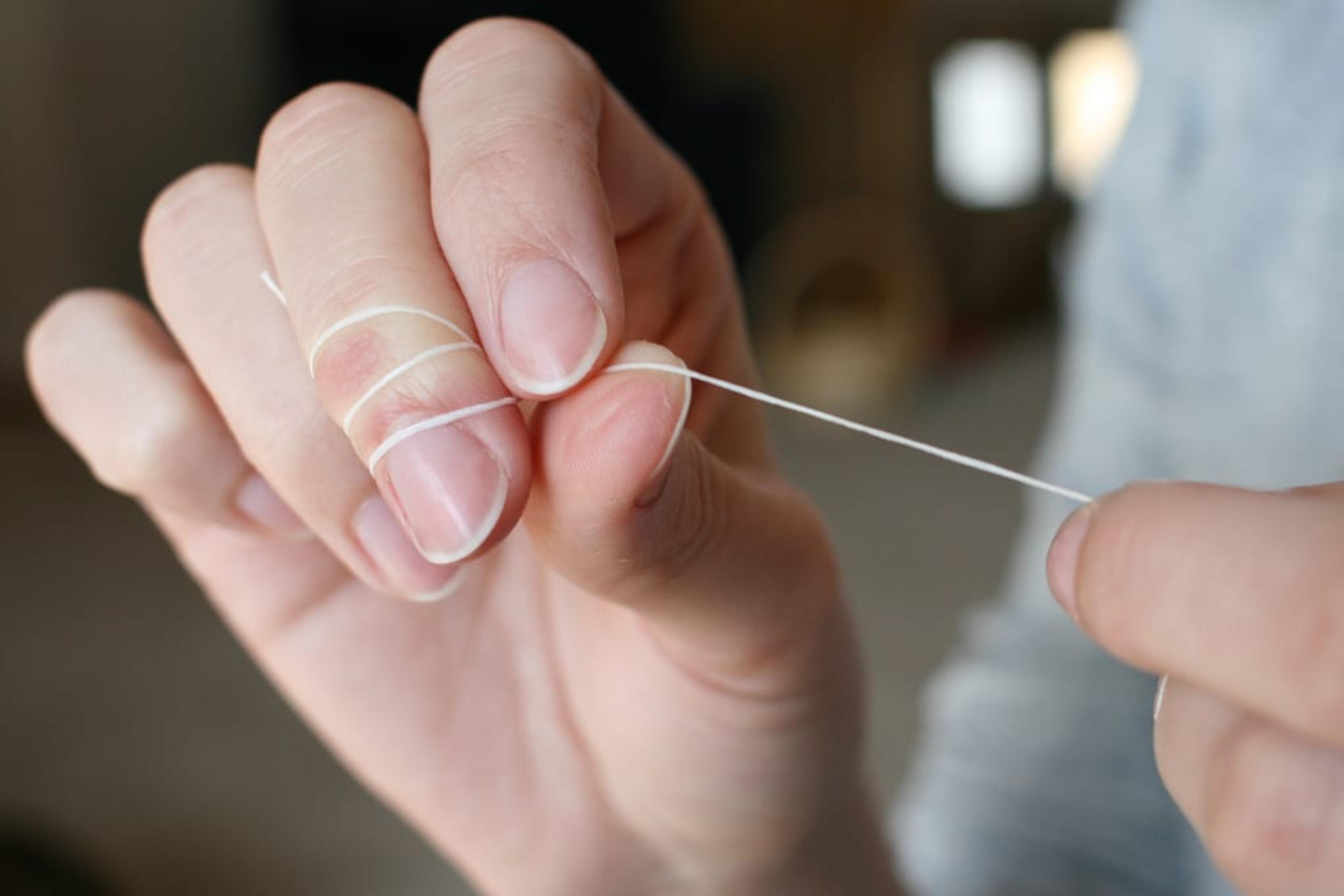How I Met My #HealthyMe Goal Through Improving My Oral Health

Carly Getz
| 4 min read

I lay in the dentist chair for my first appointment since I had been diagnosed with gum disease. Mouth open, I watched my dentist as she pressed a cool metal probe against my gums. I knew my gums were bleeding. I could taste the blood in my mouth. Then again, they’re always bleeding.
Despite brushing and flossing (somewhat) regularly my whole life, somehow I managed to get gum disease. I can chalk it up to genetics, but it doesn’t matter. I have it, and I have to live with it.
My dentist finished what she called the “periodontal probe” and sat back in her chair, giving me the same apologetic “you’re too young to have this” look that I got when I was originally diagnosed.
“What’s the verdict?” I asked. “Do I need surgery?”
That’s all I could think about. Whatever it is, please don’t be painful, expensive, scary dental surgery.
“Well, in a healthy mouth, your bones and gums would be snug against your tooth,” she explained. “When you have periodontal disease, pockets start to form around the teeth – giving bacteria space to grow.”
A healthy pocket depth is around 3 mm with no bleeding during probing. Mine were around 5 mm, with gushing blood during the probing.
Next steps? I’d have to get a scaling and root planing, which involves scraping under the gumline to remove tartar deposits. Not dental surgery, thankfully, but still a somewhat painful, expensive and scary procedure, especially for someone who has an irrational fear of dentists.
I asked if I had any other options, if there was even the slightest chance I could take care of this on my own. She said it was a possibility, but chances are I’d need to move forward with the procedure to prevent the pockets from deepening to the point that my teeth would become lose.
A possibility. That’s all I needed to hear.
She wrote me a prescription for mouthwash and gave me four months to try to work magic with an at-home oral hygiene routine. Her assistant stayed with me for an extra 20 minutes or so, giving me tips to avoid common brushing mistakes.
I left the office and adopted a new routine that I followed every single morning and night:
- Floss with string floss in a “c-shape” around each side of every tooth
- Brush my teeth, spending at least 30 seconds in each quadrant of my mouth
- Floss with my Waterpik water flosser, adding hydrogen peroxide to the water chamber
- Rinsed with my prescription Listerine
At first, it was hopeless. Even with my water flosser set to the lowest of 10 power levels, blood streamed down the front of my teeth. I looked away from the mirror, grossed out by my own reflection.
Two months in, I was on level five. My gums still bled, but at least I didn’t look like a crazy vampire anymore. I was exercising a few mornings a week, since I read about the link between fitness and oral health. I started drinking water after meals, and using a straw if I drank anything with sugar in it.
By the start of month four, the bleeding was gone. I turned my water flosser up to level 10. Still no bleeding. I couldn’t believe it. I looked in the mirror and beamed. My once deep-red, swollen gums were a smooth, pale pink.
I lay in the dentist chair for my four month check-up.
A different dentist came in the room, looking over my file and asking me a few questions about my experience up to this point. Mouth open, I watched him as he pressed the same cool metal probe against my gums. No blood.
He sat back in his chair, looking amused by my deer-in-the-headlights facial expression.
“Whatever you’re doing,” he said, “it’s working.”
Not only did I not need scaling and root planning, but my pocket depth was a healthy 3 mm. I let out a breath that I hadn’t even realized I was holding in. A huge weight lifted off my shoulders.
Now, this might not seem like a big deal to you. After all, it’s gum disease – something affecting half of American adults. And at the end of the day, scaling and root planing is really just a deep clean.
Nevertheless, I am proud of myself. I’m proud that I even went to the dentist, despite my fear that they’d tell me I needed surgery. I’m proud that I took the initiative to ask if there was something I could do on my own. I’m proud that I actually stuck to my daily routine, and followed the dental assistant’s brushing advice as best as I could.
When it comes to health issues, genetics make an easy scapegoat. After all, it’s often a huge factor and it’s completely out of our hands. But for every factor we can’t control, there is always something we can control. So as you work to meet your personal #HealthyMe goals, talk with your doctor about what’s in your power to change.
Photo Credit: Patricia H. Schuette
This blog post is part of #HealthyMe, a personalized web experience based on your health and wellness goals. To sign up today, visit https://www.ahealthiermichigan.org/healthyme





